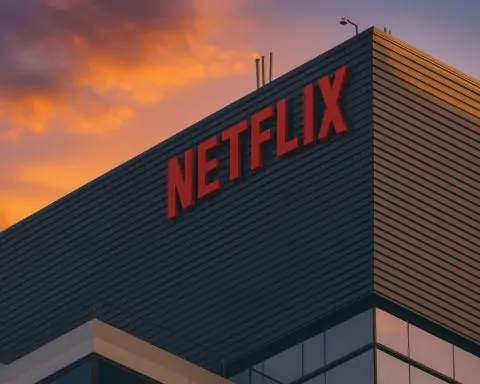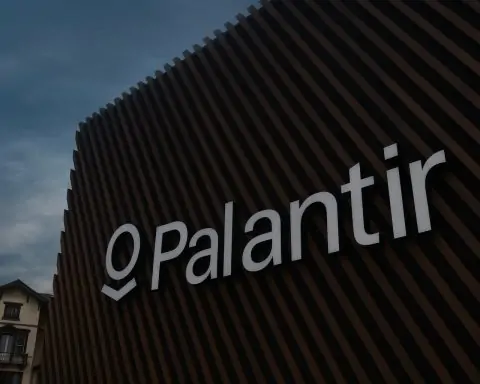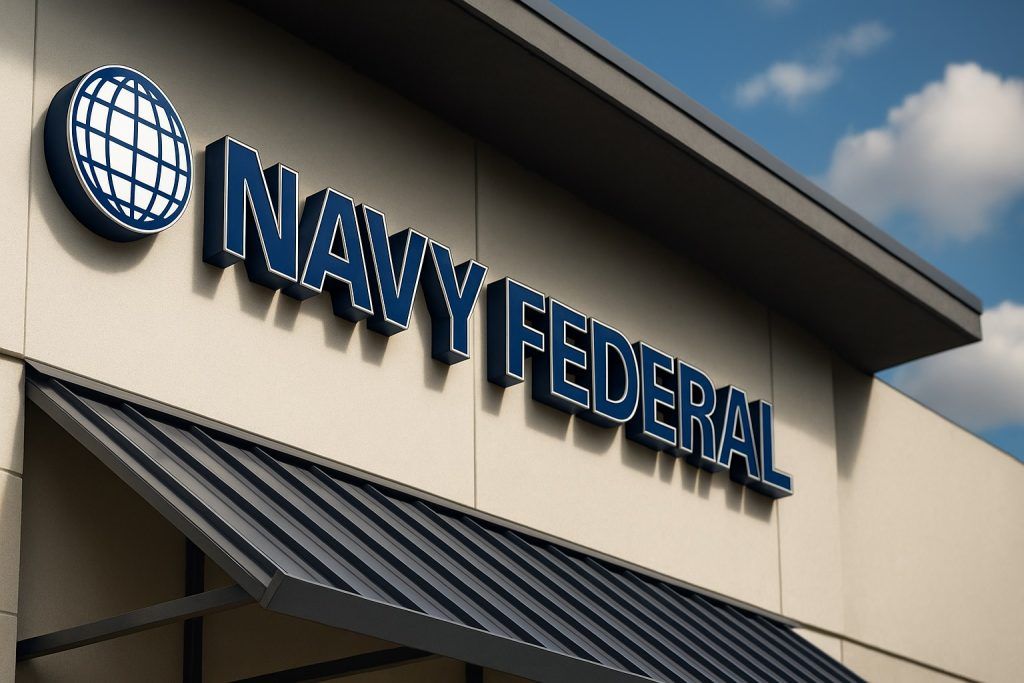- Stock Price Surge: Core Scientific’s stock last closed at $21.54 (Oct. 31, 2025), near its all-time high and up roughly 250% from its 52-week low of $6.20 [1]. Shares have gained over 50% year-to-date, fueled by Bitcoin’s 2025 rally and strategic shifts.
- $9B Buyout Blocked: On Oct. 30, shareholders rejected a proposed $9 billion all-stock acquisition by AI cloud firm CoreWeave, leading to immediate termination of the merger agreement [2] [3]. Proxy advisors ISS and major investor Two Seas Capital opposed the deal as undervaluing Core Scientific [4] [5]. CoreWeave’s CEO said he “respects the views” of Core’s stockholders and will continue their commercial partnership [6].
- Bitcoin-Fueled Rebound: Bitcoin’s price hit record highs (~$125,000) in early October 2025 [7], massively boosting miner revenues. Core Scientific – once the world’s largest Bitcoin miner – benefited alongside peers as crypto stocks surged on the boom. Other miners like Marathon Digital and Riot Platforms also rallied strongly, and many are pivoting into AI data centers to diversify [8] [9].
- Financial Turnaround:Q3 2025 revenue was $81.1 million (down 15% YoY) with a net loss of $146.7M (narrowed from a $455M loss a year prior) [10]. Bitcoin production fell 55% (post-halving) but was offset by higher BTC prices [11]. Gross profit turned positive and liquidity remains strong at $695M (cash + Bitcoin) [12] [13]. The company has 173,000 Bitcoin miners across 1.2 GW of capacity and is expanding high-performance computing (HPC) hosting services [14].
- Analysts Growing Bullish: Several Wall Street firms upgraded CORZ after the deal’s collapse. Macquarie raised its rating to Outperform with a $34 target (nearly 90% upside) [15]. Roth Capital hiked its target to $40 (from $23.50) and reiterated Buy [16] [17]. Jefferies has a Buy with a $28 target [18]. The consensus 12-month price target ~ $21.5 was already recently raised [19], and may climb further given the new upgrades.
- Future Focus – Crypto & AI: With the CoreWeave merger off, management emphasizes independence and dual focus on Bitcoin mining + AI infrastructure. Core Scientific has a major AI hosting deal with CoreWeave (~270 MW of GPU capacity by end-2025, expandable to 500 MW) that could generate multi-year revenues (originally estimated ~$1.2B over 12 years) [20]. The company aims to sign new colocation clients by Q4, leveraging ~1.5 GW power capacity ready for AI tenants [21] [22].
Stock Price & Recent Performance
Core Scientific’s stock has been on a tear in 2025. It closed at $21.54 on October 31 (Friday) [23], capping a weekly jump after the shareholder vote drama. At this level, CORZ trades just a few percent shy of its record high (~$22.12) and has skyrocketed ~250% from its 52-week low [24]. The rally has greatly outpaced the broader market, with shares up about 50–60% year-to-date and over 140% in the past six months [25]. Much of this momentum is tied to Bitcoin’s resurgence – as the cryptocurrency’s price soared to new all-time highs (~$125K) in 2025, investor enthusiasm flooded back into mining stocks [26].
Notably, trading has been volatile around key events. On the Oct. 30 shareholder meeting day, CORZ saw wild swings – initially jumping on optimism then dipping after the vote – ending around $20 [27]. But by the next day, as analysts and investors digested the failed buyout’s implications, the stock rebounded to the $21–22 range. High volatility is typical for CORZ (its beta is ~6.6), reflecting the speculative nature of crypto-related shares [28]. Short interest is also elevated (≈20% of float) [29], which some traders speculate could set the stage for a squeeze if positive news accelerates [30] [31]. Overall, Core Scientific’s stock performance has been strong, underpinned by crypto market tailwinds and confidence in the company’s post-bankruptcy reboot.
Latest News & Developments (Late Oct–Nov 2025)
The headline news for Core Scientific is the collapse of its $9 billion merger deal with CoreWeave. On October 30, Core Scientific’s shareholders voted “NO” on the proposed all-stock acquisition by CoreWeave, a fast-growing AI cloud provider [32] [33]. This was the culmination of a heated proxy battle: influential advisory firm ISS had urged investors to reject the deal, arguing that Core Scientific was doing well as a standalone company [34]. Similarly, hedge fund Two Seas Capital (one of Core’s largest holders at ~6%) campaigned that the $9B price “materially undervalues” Core Scientific [35]. Shareholders heeded these warnings, and the merger agreement was terminated immediately after the vote [36].
CoreWeave’s management publicly accepted the outcome with respectful statements. CEO Michael Intrator conceded that the $9B offer was “nice to have, not a need to have,” indicating they won’t sweeten the bid [37]. He affirmed CoreWeave will continue its commercial partnership with Core Scientific regardless [38]. For Core Scientific, the failed takeover removes uncertainty and keeps the company independent as it emerges from Chapter 11 restructuring [39]. Many investors actually cheered the deal’s collapse – a sentiment reflected in the stock’s resilience and subsequent analyst upgrades. In fact, the day after the vote, Core Scientific’s stock jumped ~4–5% to around $21.70 in early trading [40] [41]. News also broke that Macquarie, Roth, Jefferies, B. Riley, and others quickly updated their research, nearly all turning more bullish on CORZ (details below).
Aside from the merger drama, Core Scientific’s operational updates in late October show a company forging ahead. It released Q3 2025 earnings on Oct. 24, just before the vote. While revenue declined year-over-year, the results showed improving fundamentals (higher gross profit, narrower losses) as discussed in the next section. The firm also continued to expand its partnerships: notably, CoreWeave remains a key customer for Core’s data center hosting business despite the failed M&A. Under a 2024 contract, CoreWeave’s NVIDIA GPU clusters are being hosted at Core Scientific facilities – ~270 MW of power is allocated to CoreWeave’s AI workloads by end-2025, with options up to 500 MW [42]. This agreement, separate from the merger, includes CoreWeave funding much of the infrastructure build-out (over $100M in capital investment) and could bring Core Scientific an estimated $1.2+ billion in revenue over 12 years [43]. In short, even without a merger, the two companies maintain a significant commercial alliance in AI computing.
Looking at early November 2025, the narrative has shifted to “what’s next” for Core Scientific. Media coverage on Nov. 1–2 highlighted analyst reports and market sentiment. For example, Yahoo Finance and Reuters reported on the shareholder rejection, emphasizing that investors felt Core could unlock more value solo [44] [45]. CoinDesk noted the upside in remaining independent: Core can now freely lease out its data center capacity to additional AI clients, rather than being tied to one parent [46] [47]. Meanwhile, industry news (Blockspace, Decrypt, TheStreet, etc.) have compared this situation to a broader trend: many Bitcoin miners are reinventing themselves as hybrid crypto-and-AI infrastructure firms. In Core Scientific’s case, the company had “entered the AI race” early by repurposing some mining facilities for HPC (high-performance computing) tasks [48]. This strategy appears vindicated by the recent events – instead of selling out, Core Scientific is doubling down on becoming a critical player at the intersection of blockchain and AI.
Financials & Company Fundamentals
Core Scientific’s financial profile reflects both the challenges of crypto mining and the promise of its new ventures. In Q3 2025, the company generated $81.1 million in revenue, down from $95.4M a year earlier [49]. The decline was mainly due to a sharp drop in Bitcoin production (Bitcoin mined fell ~55% YoY) following the April 2024 halving and reduced operating capacity [50]. However, this was partially offset by the surging price of Bitcoin – the average BTC price in Q3 was ~88% higher year-on-year [51], allowing Core to earn more per coin mined. The company also saw hosting/colocation revenues from clients (like CoreWeave) ramp up, helping diversify its top line.
Importantly, profitability metrics improved. Gross profit turned slightly positive at $3.9M for Q3 (versus a small loss in Q3 2024) [52]. The net loss was $146.7M, a large figure but significantly better than the $455M loss in the same quarter last year [53]. (The prior year’s loss was inflated by hefty one-time charges during bankruptcy; those have since abated.) On an adjusted basis, Core Scientific was near breakeven EBITDA in Q3, signaling that its core operations are stabilizing. The company is still investing aggressively: capital expenditures were $244.5M in the quarter, mostly pouring into new data center builds [54]. Notably, CoreWeave financed about $196M of that CapEx as part of the hosting partnership [55] – effectively footing the bill for much of Core’s AI infrastructure expansion. This creative financing means Core Scientific can grow its capacity without overextending its own balance sheet.
Speaking of the balance sheet, Core Scientific emerged from Chapter 11 (bankruptcy reorganization) earlier in 2025 and now boasts a solid liquidity cushion. As of Q3’s end, it held approximately $454M in cash plus $241M in Bitcoin treasury assets [56] [57]. That’s roughly $695 million in liquid assets [58], which management says is sufficient to fund near-term growth. The company’s debt was substantially restructured during bankruptcy, giving it a cleaner slate. At a market cap of about $6.7 billion [59], CORZ currently trades at a lofty valuation relative to current earnings – roughly 20x trailing sales and over 150x P/E (on a tiny positive EPS) [60] [61]. This pricing reflects investors’ high growth expectations rather than present fundamentals. In fact, H.C. Wainwright projects ~$424M revenue in 2026, and at the ~$21 share price that implies ~19x forward sales [62] – steep, but the analyst deemed it justified by Core’s growth trajectory into 2027. Bulls argue that the company’s unique combination of massive Bitcoin mining capacity and AI-focused data centers positions it for explosive revenue growth as both sectors expand.
From an operational standpoint, Core Scientific remains a leader in the crypto mining industry. The company runs approximately 173,000 ASIC miners (Bitcoin mining machines) across data centers in states like Texas, Georgia, Oklahoma, North Dakota and more [63]. Its total power capacity is about 1.2 gigawatts (GW) dedicated to blockchain and HPC, which puts it among the largest mining infrastructures globally. This scale translated to significant Bitcoin output – though temporarily lower due to the halving and some capacity being repurposed, Core still mines a substantial amount of BTC to either hold or sell for revenue. Additionally, Core Scientific operates a high-density colocation business, hosting third-party clients’ hardware (both crypto miners and AI compute clusters). Hosting and services now complement self-mining as key revenue streams. In essence, Core Scientific’s business model is evolving from a pure “mine-and-sell Bitcoin” approach to a more diversified digital infrastructure provider model. This includes earning recurring fees by renting out space, power, and cooling to clients like CoreWeave (for AI GPU workloads) and other miners who prefer to co-locate their rigs. The strategy leverages Core’s expertise in running large-scale, energy-intensive computing facilities – whether they’re crunching crypto hashes or machine learning models.
Market Sentiment & Analyst Commentary
Market sentiment around Core Scientific has improved markedly following the shareholder vote. Many investors view the failed CoreWeave takeover as a bullet dodged that frees up Core to realize its full value. Institutional Shareholder Services (ISS) encapsulated this view, noting that “the market believes the company’s value is greater than the offer” CoreWeave had made [64]. In other words, keeping Core Scientific independent could allow its share price to run higher than the equivalent ~$20.40/share deal price [65]. The proxy firm and other observers pointed out that Core has been performing well on its own – it successfully navigated bankruptcy, is growing its capacity, and benefiting from crypto’s resurgence [66]. That confidence was echoed by major shareholder Two Seas Capital, which called the merger terms insufficient and pushed for management to continue executing solo [67]. Now that shareholders have indeed “walked away” from the deal, those same voices are generally upbeat about Core Scientific’s prospects.
Wall Street analysts, in particular, have turned quite bullish in recent days. Macquarie’s team upgraded CORZ to Outperform immediately after the vote, declaring the outcome a net positive. They highlighted that without the merger, Core Scientific has more flexibility to lease out its available power capacity to new AI customers, potentially on better terms [68] [69]. Macquarie also nearly doubled its 12-month price target – from $18 to $34 [70] – implying they see over 50% upside from current levels. Similarly, Roth Capital analysts argued that Core can now fully resume its standalone growth path and pursue additional customer deals (which may have been on hold during merger talks). Roth hiked its target price to $40 (from $23.50) and reaffirmed a Buy rating on CORZ [71].
Other firms piled on: investment bank Jefferies noted Core Scientific emerges with 1.5 GW of capacity (590 MW already committed to CoreWeave, ~700 MW more in development) and “little capital expenditure tied to the now-defunct deal”, meaning its expansion plans are intact [72] [73]. Jefferies has a Buy rating and $28 price goal for the stock [74]. B. Riley Securities and H.C. Wainwright had just upgraded Core Scientific even before the vote (anticipating a rejection) – B. Riley to Buy with a $30 target and Wainwright to Buy with a $25 target [75] [76]. These moves suggest a broad consensus that Core Scientific is better off without the merger. As CoinDesk summarized, the failed deal was “seen as a positive outcome” on the Street [77]. Indeed, average analyst price targets, which were around $21–22, are likely to drift higher with these new bullish revisions [78].
That said, not everyone is unreservedly optimistic. A note of caution was sounded by D.A. Davidson analyst Gil Luria, who observed that shareholders’ lofty valuation expectations might reflect “AI trade froth” more than fundamentals [79] [80]. In other words, the excitement around anything AI-related (CoreWeave being an Nvidia-backed AI cloud firm) has inflated sector valuations, and Core Scientific’s investors may be betting on a similar halo effect. Luria implied Core’s true economic value might not be as high as the market thinks, once the AI hype settles [81]. This perspective reminds us that Core Scientific’s stock – like many crypto/AI plays – carries a rich valuation and significant risk if growth disappoints. Nonetheless, the prevailing market mood is bullish. The successful Chapter 11 restructuring, combined with booming Bitcoin prices and the AI pivot narrative, have turned Core Scientific into a market darling in the crypto equity space. As of early November 2025, sentiment from both retail and institutional investors appears positive, albeit tempered by awareness of volatility. The stock’s heavy trading volumes and high institutional ownership (~93%) indicate strong interest, and any new developments (like major customer wins or Bitcoin price swings) are likely to move the stock significantly.
Future Outlook & Forecast
Looking ahead, Core Scientific’s trajectory will depend on its execution in both Bitcoin mining and AI hosting – and on the broader market conditions for each. On the crypto side, the outlook remains tied to Bitcoin’s fortunes. After the 2024 halving, miners like Core earn fewer BTC per block, so a sustained high Bitcoin price is critical. Fortunately, 2025 has delivered on that so far: Bitcoin is hovering around $110K–$120K per coin [82], dramatically boosting mining economics. If these price levels hold (or climb further), Core Scientific can generate healthy cash flow from its mining operations. In previous quarters, even before the recent peak, peers like Riot Platforms reported record profits by selling some Bitcoin at ~$115K [83] [84]. Core Scientific itself holds a sizable Bitcoin treasury (~∗∗approx.2,000BTC∗∗approx. 2,000 BTC∗∗approx.2,000BTC∗∗ based on $241M at quarter-end [85]) which has appreciated and could be strategically sold or leveraged to fund growth. However, if Bitcoin were to pull back sharply, that would pressure Core’s revenue and potentially its stock – crypto mining remains a highly cyclical, volatile business. Investors should be mindful that crypto market swings (driven by regulation, macroeconomics, or the next halving cycle) can dramatically impact Core Scientific’s fundamentals.
On the AI/data center side, the outlook is one of robust growth but also rising competition. Core Scientific is positioning itself as a boutique provider of HPC infrastructure, repurposing some facilities from mining to support AI workloads (machine learning, cloud computing, etc.). The company’s partnership with CoreWeave gives it a strong anchor client in this space, with a long-term contract worth potentially billions of dollars in hosting fees [86]. Moreover, Core’s management has indicated confidence in signing new colocation customers by year-end – essentially leasing out remaining capacity to other AI or high-performance computing users [87]. If they announce a major new tenant (for example, another AI startup or an enterprise HPC client), it would validate the strategy and diversify revenue beyond CoreWeave. Jefferies analysts explicitly call the signing of a new tenant a “key milestone” that could accelerate revenue and reduce dependence on CoreWeave [88] [89]. Thus, a lot is riding on Core Scientific’s ability to execute in the data center services arena. The good news: the demand for AI-ready data center space is booming, as evidenced by CoreWeave’s own rapid growth and miners like Marathon and Riot also exploring HPC ventures [90]. Core has proven expertise in building massive facilities quickly (an edge noted by H.C. Wainwright [91]), which bodes well in attracting clients.
Analysts covering CORZ mostly foresee strong growth ahead. The range of 1-year price targets now spans roughly $15 on the low end to $34–$40 on the high end [92] [93], reflecting different views on execution and market conditions. On average, targets in the low-$20s suggest modest upside from current prices [94], but clearly some bulls believe the stock can nearly double if all goes well. A few factors that could drive outperformance: (1) Bitcoin price upside – any further rally beyond $125K (or the next speculative surge) would directly boost mining revenue and likely send miner stocks higher across the board. (2) Successful AI pivot – if Core Scientific secures multiple big HPC hosting deals, it could unlock a new, steady income stream valued at tech-like multiples rather than miner multiples. (3) Efficiency gains – continued improvements in mining efficiency, low-cost power contracts, or new mining technology could widen margins (for instance, rivals like Riot have leveraged energy credits to cut costs [95]).
Conversely, risks to the outlook include the usual suspects: crypto volatility (a Bitcoin crash or even a temporary bear market retracement), operational setbacks (delays or issues in building out data centers or deploying miners), and regulatory hurdles. The crypto mining industry faces regulatory scrutiny over energy usage and environmental impact; any adverse policy (e.g. higher electricity taxes for miners, or restrictions on crypto in key states) could hurt Core Scientific’s operations. Additionally, as more miners pivot to AI, competition in HPC hosting will intensify – Core Scientific will have to compete with not just crypto peers but also traditional data center players for AI clients. This could pressure pricing or require further capital investment to stay cutting-edge. It’s also worth noting that at current valuations, execution is key – with the stock trading around ~20x sales, the market is pricing in a lot of future success [96]. Any disappointment in quarterly results or client signings could result in a sharp correction.
In summary, Core Scientific’s future appears bright but not without challenges. The company is now unencumbered by the merger saga and has a clear mandate from shareholders to grow independently. It holds a leading position in Bitcoin mining and is rapidly expanding into the AI data center niche – a dual strategy that few others have executed at this scale. As CEO Adam Sullivan put it, Core Scientific will “continue to transform and expand our hosting business… as we provide valuable capacity to the dynamic world of AI compute, [while] reinforcing our strong bitcoin mining franchise” [97]. If Bitcoin remains strong and the AI infrastructure boom continues, CORZ could be poised for significant long-term gains. Investors will be watching upcoming earnings reports and project announcements closely for proof that the company can deliver on its ambitious promises.
Comparison with Industry Peers
Core Scientific operates in a competitive field alongside other publicly traded crypto mining and blockchain infrastructure firms. A comparison with peers provides context on where CORZ stands:
- Marathon Digital Holdings (MARA): Marathon is one of the largest Bitcoin miners, known for its aggressive hashrate expansion. As of late 2025, Marathon’s deployed hashpower is about 59.4 EH/s, surpassing Core Scientific’s last reported 32 EH/s (approximate, based on 173k miners) [98]. Marathon also holds the industry’s biggest Bitcoin treasury – over 52,000 BTC (worth >$5B at current prices) – far more than Core’s ~2,000 BTC [99]. Marathon’s stock has likewise exploded amid 2025’s crypto rally; for instance, it surged ~17% in late September during Bitcoin’s “Uptober” run-up [100]. Like Core, Marathon is experimenting with AI hosting: it has signaled plans to repurpose some facilities for high-performance computing and even partnered on a wind-powered data center project in Texas [101]. Marathon’s scale gives it a low unit cost for mining, but it remains more of a pure-play miner (with high exposure to Bitcoin’s price) compared to Core’s diversified approach.
- Riot Platforms (RIOT): Riot is another leading U.S. miner, often mentioned alongside Core Scientific. Riot’s stock is up roughly 40–50% YTD 2025 and hit multi-year highs in October [102], thanks to record Bitcoin production and profitability. In Q2 2025, Riot posted $219 million in net income – a dramatic swing to profit – aided by a $470M mark-to-market gain on its Bitcoin holdings during the price surge [103]. Riot operates ~36 EH/s of hashrate and holds ~19,300 BTC in treasury [104] [105]. A key differentiator is Riot’s ultra-low mining costs; by leveraging demand-response energy credits in Texas, Riot achieved electricity costs as low as ~$0.026/kWh in some months [106]. This gives it high margins as long as Bitcoin stays well above breakeven (~$49K per BTC post-halving) [107]. Riot too is pursuing the “AI pivot” – building large data center capacity to potentially host AI workloads at its Texas sites [108]. Analysts have grown bullish on Riot, similar to Core, with Macquarie reiterating Outperform and others eyeing partnerships in AI as a catalyst [109]. Both Riot and Core Scientific share the narrative of transitioning from pure miners to broader digital infrastructure providers.
- CleanSpark (CLSK), Hut 8 (HUT), Bitfarms (BITF), and others: A number of smaller peers are also relevant. CleanSpark, for example, made headlines in October by announcing new AI-focused data centers alongside its Bitcoin mining – a move that sent its stock up 13% in a day [110] [111]. Hut 8 (a Canadian miner merging with US Bitcoin Corp) and Cipher Mining have similarly touted plans to utilize mining sites for HPC hosting [112]. Bitfarms is another miner that enjoyed a stock price surge (~5x in 2025) by riding the Bitcoin boom and exploring AI partnerships [113]. Iris Energy (IREN) and Terawulf (WULF) are mining firms that, like Core, emerged from financial distress and pivoted to new strategies (Iris focusing on self-mining with renewable energy, Terawulf integrating data center deals like FluidStack [114]). In general, the entire crypto mining sector is in a renaissance in late 2025 – stock prices across the board have climbed with Bitcoin’s bull run, and many companies are broadening their business models to include AI/cloud services.
In comparison, Core Scientific stands out for having gone through bankruptcy and come out the other side as a $6+ billion company tapping into the AI trend. It has one of the largest capacities among peers, second only to Marathon in many metrics, and its close partnership with an AI unicorn (CoreWeave) is fairly unique. This could give Core a first-mover advantage in melding crypto and AI infrastructure. However, Core also carries significant expectations (and a higher valuation multiple) relative to some peers. By contrast, a miner like Bitfarms or Hut 8 might trade at lower multiples but also have more limited growth stories. Investors interested in CORZ may also track MARA and RIOT closely, since these stocks often move in tandem on macro news (like Bitcoin ETF developments or crypto regulation changes). Some ETFs, such as the Valkyrie Bitcoin Miners ETF (WGMI), hold Core Scientific alongside these peers [115], reflecting how CORZ is now considered a key player in the crypto mining industry post-reorganization.
Ultimately, Core Scientific’s peer group is benefiting from common tailwinds – a booming Bitcoin price and excitement over AI – but each company’s execution and strategic focus will determine its long-term success. Core’s decision to reject a takeover and remain independent signals confidence that it can compete head-to-head with the likes of Marathon and Riot. If it successfully scales both its mining output and its AI hosting revenues, Core Scientific could solidify its position as a leader in the next generation of blockchain infrastructure companies. Investors in CORZ will likely continue benchmarking its hashpower, costs, and client wins against those of its rivals as a gauge of relative performance in this fast-evolving sector.
Sources: Latest financial reports and press releases from Core Scientific; news from Reuters, CoinDesk, Investopedia, and Yahoo Finance on the CoreWeave deal; analysis from TechStock² (TS2.tech) on Bitcoin miners’ AI pivots [116]; Q3 2025 earnings data from Core Scientific’s investor filings [117]; and Wall Street analyst commentary from Macquarie, Roth Capital, Jefferies, H.C. Wainwright, et al. [118] [119]. All information is current as of November 2, 2025.
References
1. finviz.com, 2. ts2.tech, 3. www.reuters.com, 4. ts2.tech, 5. www.reuters.com, 6. ts2.tech, 7. ts2.tech, 8. ts2.tech, 9. ts2.tech, 10. ts2.tech, 11. ts2.tech, 12. ts2.tech, 13. ts2.tech, 14. ts2.tech, 15. www.coindesk.com, 16. finviz.com, 17. www.insidermonkey.com, 18. www.coindesk.com, 19. ts2.tech, 20. ts2.tech, 21. www.coindesk.com, 22. www.coindesk.com, 23. finviz.com, 24. finviz.com, 25. finviz.com, 26. ts2.tech, 27. ts2.tech, 28. finviz.com, 29. finviz.com, 30. ts2.tech, 31. ts2.tech, 32. ts2.tech, 33. www.reuters.com, 34. www.reuters.com, 35. ts2.tech, 36. ts2.tech, 37. ts2.tech, 38. ts2.tech, 39. ts2.tech, 40. www.coindesk.com, 41. www.coindesk.com, 42. ts2.tech, 43. ts2.tech, 44. www.reuters.com, 45. www.reuters.com, 46. www.coindesk.com, 47. www.coindesk.com, 48. finance.yahoo.com, 49. ts2.tech, 50. ts2.tech, 51. ts2.tech, 52. ts2.tech, 53. ts2.tech, 54. ts2.tech, 55. ts2.tech, 56. ts2.tech, 57. ts2.tech, 58. ts2.tech, 59. finviz.com, 60. finviz.com, 61. finviz.com, 62. www.coindesk.com, 63. ts2.tech, 64. ts2.tech, 65. ts2.tech, 66. www.reuters.com, 67. ts2.tech, 68. www.coindesk.com, 69. www.coindesk.com, 70. www.coindesk.com, 71. www.insidermonkey.com, 72. www.coindesk.com, 73. www.coindesk.com, 74. www.coindesk.com, 75. finviz.com, 76. www.coindesk.com, 77. www.coindesk.com, 78. ts2.tech, 79. www.reuters.com, 80. www.reuters.com, 81. www.reuters.com, 82. ts2.tech, 83. ts2.tech, 84. ts2.tech, 85. ts2.tech, 86. www.coindesk.com, 87. www.coindesk.com, 88. www.coindesk.com, 89. www.coindesk.com, 90. ts2.tech, 91. www.coindesk.com, 92. ts2.tech, 93. www.insidermonkey.com, 94. ts2.tech, 95. ts2.tech, 96. www.coindesk.com, 97. ts2.tech, 98. ts2.tech, 99. ts2.tech, 100. ts2.tech, 101. ts2.tech, 102. ts2.tech, 103. ts2.tech, 104. ts2.tech, 105. ts2.tech, 106. ts2.tech, 107. ts2.tech, 108. ts2.tech, 109. ts2.tech, 110. ts2.tech, 111. ts2.tech, 112. ts2.tech, 113. ts2.tech, 114. finviz.com, 115. finviz.com, 116. ts2.tech, 117. ts2.tech, 118. www.coindesk.com, 119. www.insidermonkey.com







